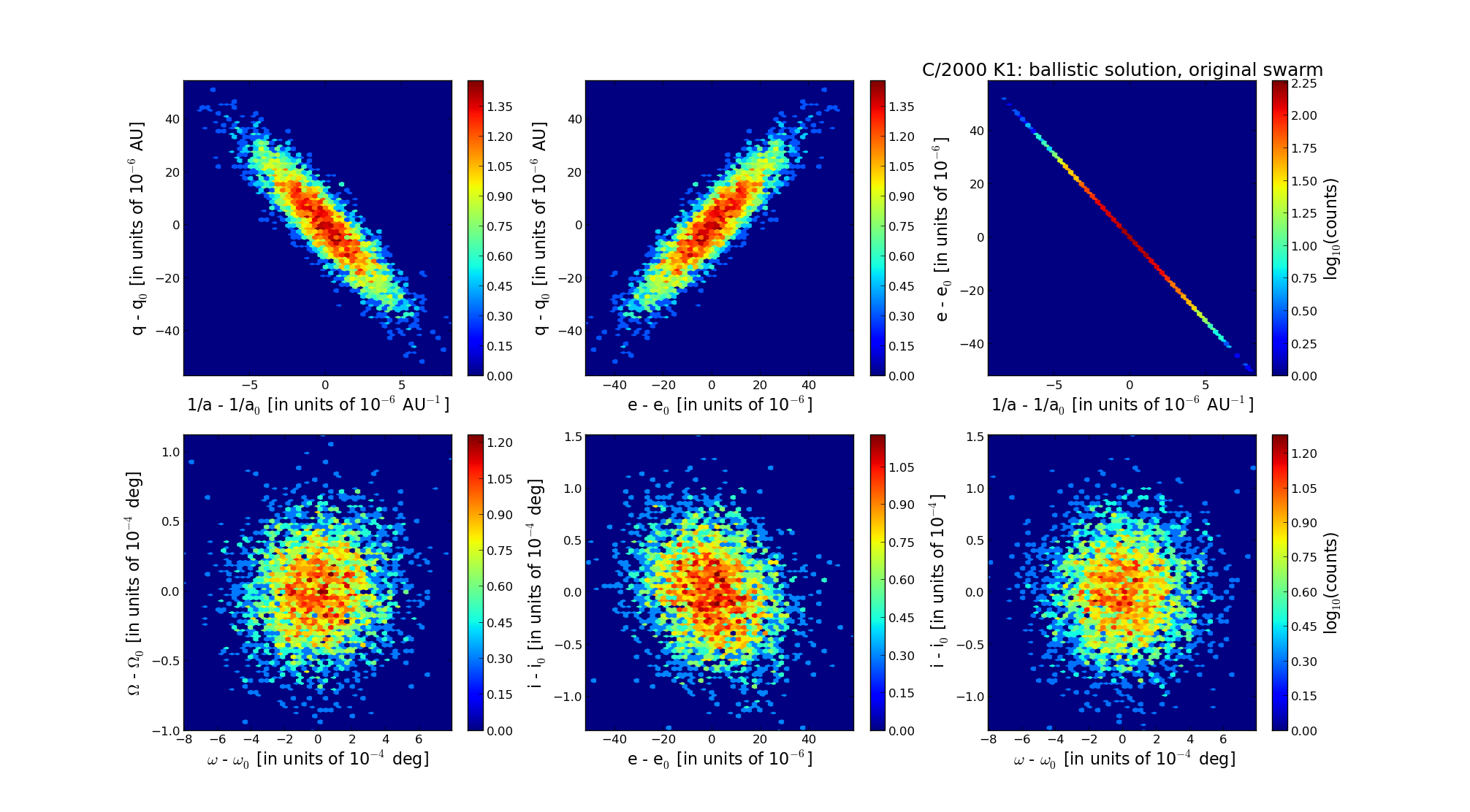| Solar System Dynamics & Planetology Group |
 |
C/2000 K1 LINEAR |  |
| Solar System Dynamics & Planetology Group |
 |
C/2000 K1 LINEAR |  |
| number of observations | 333 |
| number of residuals | 663 |
| data interval | 1999 May 18 — 2001 Aug. 15 |
| rms [arcsec] | 0.72 |
| orbit quality class | 1a |
| Epoch (TT) | 19991208.0 | = JD 2451520.5 |
| time of perihelion passage (TT) | 19991214.799672 | ± 0.002273 |
| perihelion distance | 6.27611470 | ± 0.00001447 |
| eccentricity | 1.00240548 | ± 0.00001457 |
| argument of perihelion [deg] | 15.814601 | ± 0.000212 |
| longitude of the ascending node [deg] | 260.194253 | ± 0.000028 |
| inclination [deg] | 116.782036 | ± 0.000037 |
| inverse semimajor axis [10-6 au-1] | -383.28 | ± 2.32 |

| Epoch (TT) | 16920311 | |
| time of perihelion passage (TT) | 19991213.536382 | ± 0.002299 |
| perihelion distance | 6.27823901 | ± 0.00001463 |
| eccentricity | 0.99974889 | ± 0.00001453 |
| argument of perihelion [deg] | 15.737694 | ± 0.000216 |
| longitude of the ascending node [deg] | 260.123450 | ± 0.000028 |
| inclination [deg] | 116.745943 | ± 0.000038 |
| inverse semimajor axis [10-6 au-1] | 40.00 | ± 2.31 |
| Epoch (TT) | 23081118 | |
| time of perihelion passage (TT) | 19991213.783393 | ± 0.002328 |
| perihelion distance | 6.28089295 | ± 0.00001466 |
| eccentricity | 0.99913582 | ± 0.00001454 |
| argument of perihelion [deg] | 15.726080 | ± 0.000216 |
| longitude of the ascending node [deg] | 260.150800 | ± 0.000028 |
| inclination [deg] | 116.769737 | ± 0.000038 |
| inverse semimajor axis [10-6 au-1] | 137.59 | ± 2.32 |